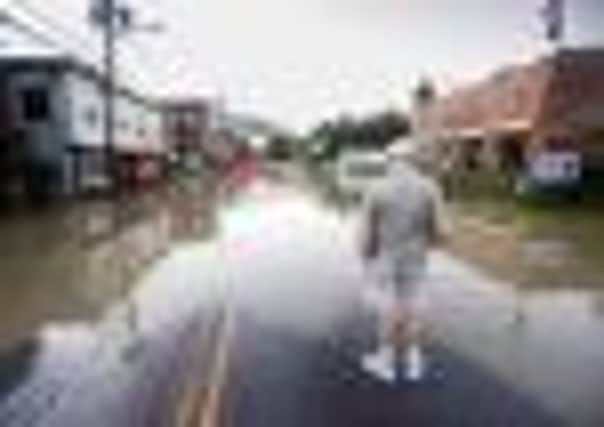US coast deluged by worst floods in memory


The governor of Vermont, Peter Shumlin, said the state was suffering badly from flooding after witnessing “extraordinary” amounts of rainfall when the tropical storm hit over the weekend.
“Irene just deluged us with extraordinary rain,” he said. “It’s the worst flooding we’ve seen in 75 years – perhaps ever.”
Advertisement
Hide AdAdvertisement
Hide AdSome rivers rose as much as 16ft in just a few hours, breaking all previous records. Bridges were washed away, buildings were flooded and streets left underwater in many of the state’s towns and cities, including its capital Montpelier.
“It was definitely an historic event up here,” said Andrew Loconto, a meteorologist in South Burlington, Vermont.
President Barack Obama declared an emergency in Vermont, allowing the Federal Emergency Management Agency to coordinate disaster relief efforts.
Mr Shumlin was yesterday planning to tour the state today in a National Guard helicopter, with hundreds of roads still closed, many bridges down and some communities cut off altogether. Almost 50,000 state residents remain without power.
Advertisement
Hide AdAdvertisement
Hide AdFurther south in New York, however, transport systems are returning to normal after the city narrowly avoided the worst of the storm over the weekend,
John F Kennedy and Newark international airports opened to arrivals yesterday, while departing flights were expected to re-start last night. LaGuardia Airport opened to both arriving and departing flights.
British Airways and Virgin Atlantic were among those forced to suspend passages to New York and other eastern cities on Saturday. Flight tracking service FlightAware says there were nearly 1,500 flights cancelled yesterday, adding to nearly 12,000 grounded at the weekend, topping all previous records.
Both Virgin and BA said they are now operating as normal, and a BA spokesman said the carrier hoped to add an extra flight last night from Newark to London Heathrow in a bid to help some of the many holidaymakers stranded in the US.
Advertisement
Hide AdAdvertisement
Hide AdBut travellers were warned they faced further delays because flights bound for Britain are already full.
The Association of British Travel Agents (Abta) said between 5,000 and 10,000 British holidaymakers are likely to be in New York at the moment.
According to the organisation, the city is the single most popular long haul destination in the world among British holidaymakers.
The New York metropolitan area’s transit system, which was shut down because of weather for the first time in its history over the weekend, is now slowly re-starting.
Advertisement
Hide AdAdvertisement
Hide AdLimited bus services began on Sunday and the New York subway service was partially restored yesterday. Passengers were warned to expect long queues and long waits. Commuter rail to Long Is land and New Jersey was being partially restored, but train services to northern suburbs were suspended because of flooding and mudslides.
Even some of New York’s iconic yellow cabs were pictured up to their wheel wells in water.
But despite the eye of the storm having passed over Coney Island and Central Park, the city escaped relatively unscathed.
Across the US as a whole, however, the storm left 20 people dead, millions without power and forced airlines to cancel about 9,000 flights.
Advertisement
Hide AdAdvertisement
Hide AdLights started to come back on for many on Sunday, though it was expected to take days for electricity to be fully restored across the whole of the eastern seaboard.
New England felt the brunt of the diminished but still-dangerous winds yesterday, which extend more than 300 miles from the centre of the storm.
They were expected to hit eastern Canada last night, with storm warnings issued for the south coast of New Brunswick and Nova Scotia.
The Foreign Office has urged British nationals who find themselves caught up in the extreme weather conditions to follow the advice of local authorities, monitor local television and radio and leave the area if advised.